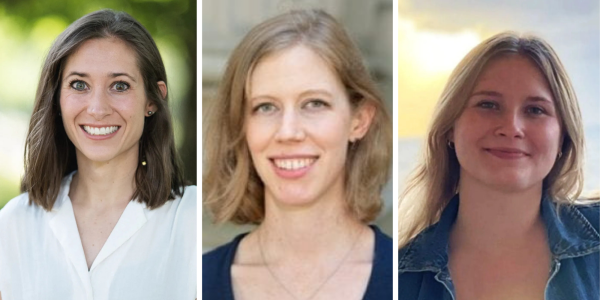David Carter, associate professor of political science, studies international relations. He sat down with The Ampersand as part of our series highlighting faculty that joined Arts & Sciences this academic year.

What are some of the things that drew you to Washington University?
The political science department is what drove my interest in the university. The department has a great graduate program that is well-known for training students that do the kind of work that I am interested in, which is a really important thing for someone at my career stage. I knew many in the department from their work and have long thought of it as a place where we would be happy working.
As your first year here comes to close, have you found any favorite spots on campus or in St. Louis?
I have a number of them. We live right next to campus and Forest Park, and I’d have to say that Forest Park is one of my favorite spots in St. Louis thus far. I like running in the park, biking with my wife and two young kids, and we often visit the museums and attractions in the park on the weekends. The park is an amazing asset for the city and the area around WashU. I also am very into music and record collecting, and I’ve been enjoying the wealth of music venues and record stores in St. Louis.
Your work is focused on interstate conflict and violence. When did you first become interested in studying these issues?
I first became interested in international conflict when I was a junior in college. I had wanted to study political science since I was a high school student, but it wasn’t until I took a U.S. Foreign Policy class with Professor Chong-doh Hah at Lawrence University that my interest in international relations was sparked.
A current project uses digital maps of territories claimed by secessionist groups. What areas of the world have these maps, and how are they created? Is mapping technology changing the way you study boundary issues?
The existence of maps is pretty variable globally, as some regions or conflicts have very nicely documented and precise maps, while they must be constructed from a variety of source material in other cases. The ability to “easily” produce and analyze geographic information systems (GIS) data has changed the way I do research. When I first started collecting data on boundary changes for a project in graduate school, which was around 2004-2005, I did most of the coding work by hand. Digitizing maps or creating them from source information to produce this kind of data is superior in multiple respects, so it really is a big improvement.
We live in an era with ever-increasing attention on the U.S. border. Does the current political situation affect the ways you teach classes like "Political Borders, Domestic Politics and Patterns of Conflict and Cooperation"? If so, in what ways?
The increase in discussion of the U.S. border is part of a global trend, but yes, the attention to the U.S. border has a big impact on the way I approach teaching the topic. First of all, introducing the study of borders to students has become a lot easier as I can start by connecting our discussion to the debate in the U.S. over the U.S.-Mexico border and everyone is at least pretty aware of the issue and the basic arguments that surround it.
What are some of the big questions that you hope to address going forward?
A lot of my recent work has explored under what conditions political borders effectively coordinate economic and political behavior, and when and why borders are associated with instability and violence. I’ve cut at this basic question from a bunch of different angles in a number of articles, and I’d like to cumulate a lot of my prior work into a book project that more directly addresses the bigger questions about what underlies the great variation we see in the “effectiveness” or stability of political borders with distinct features and histories.




